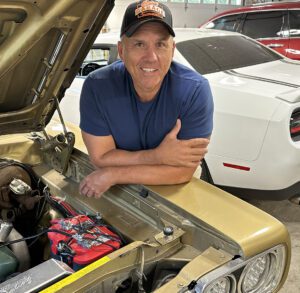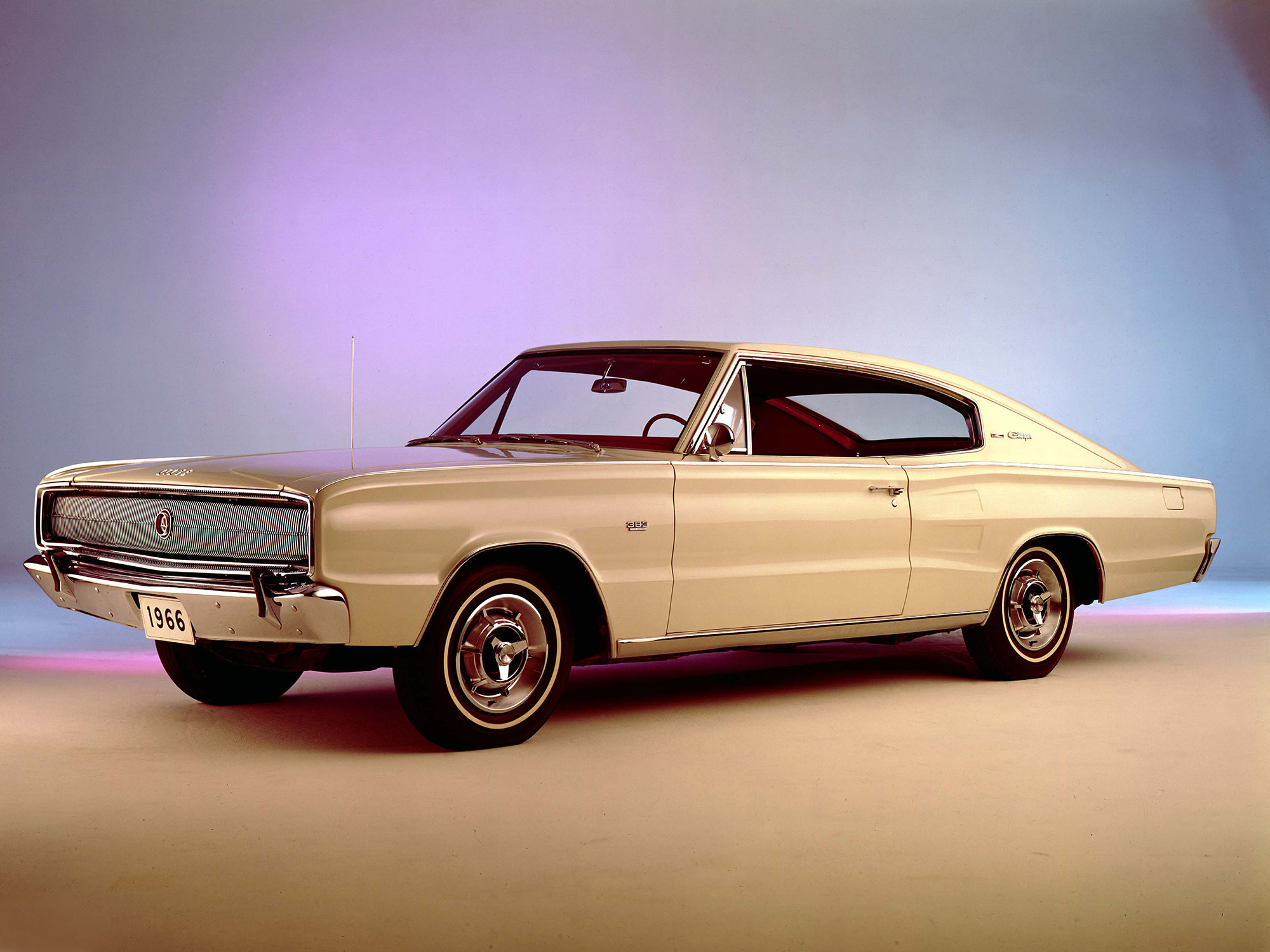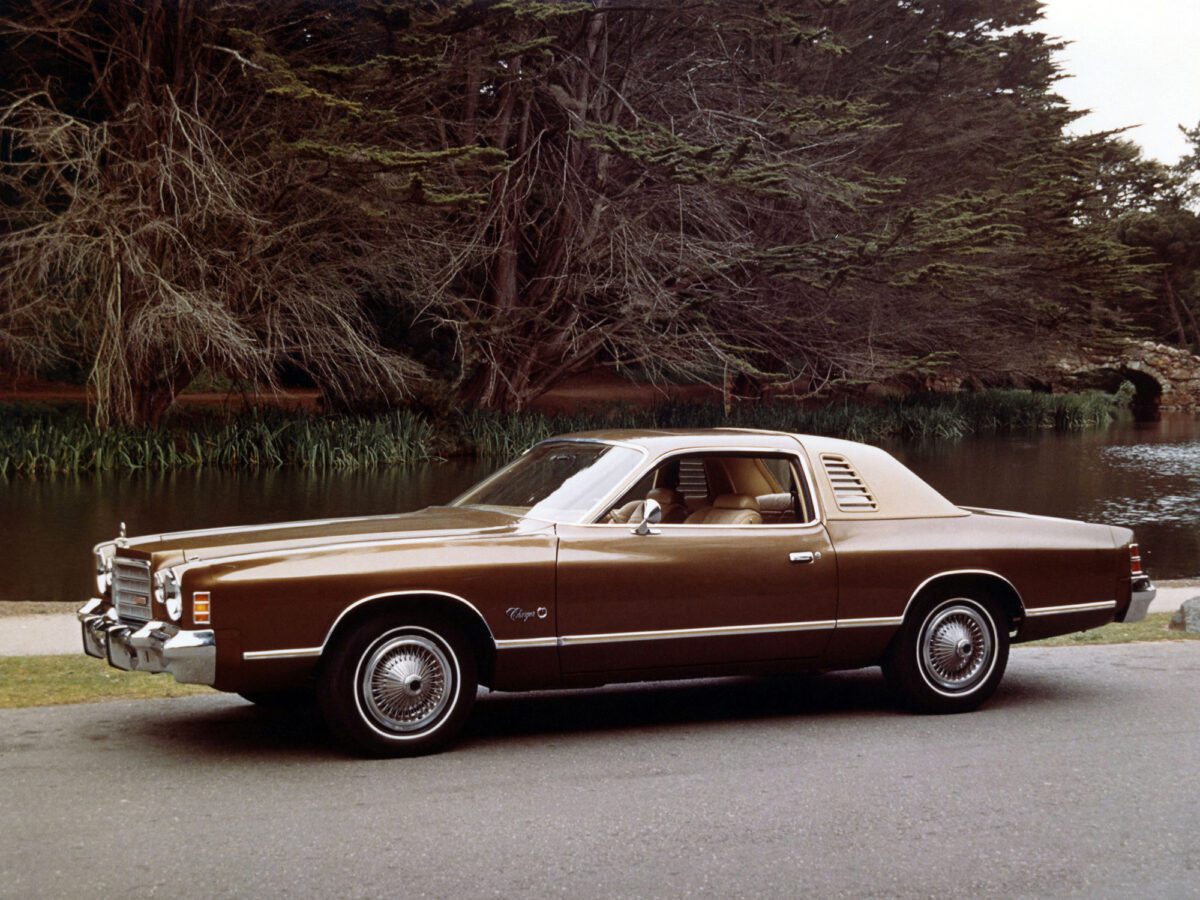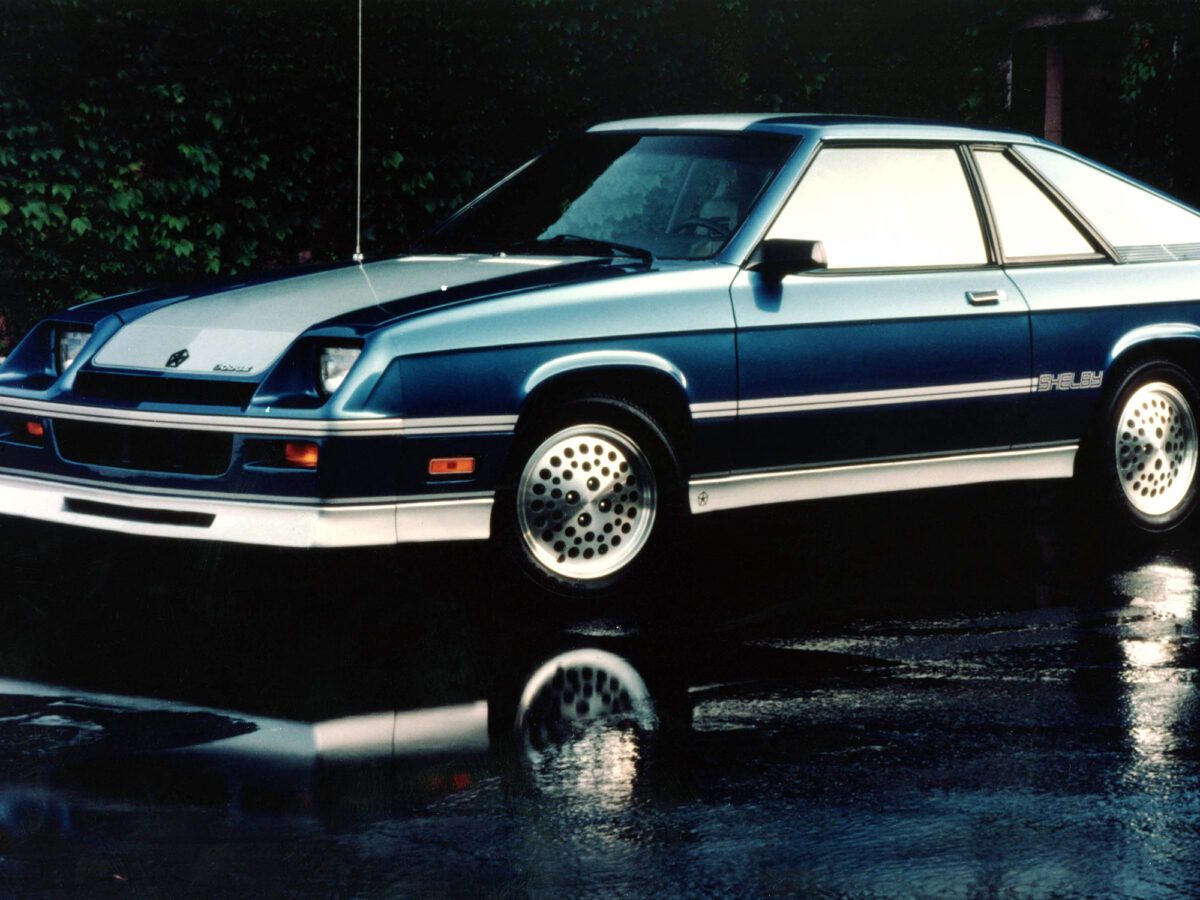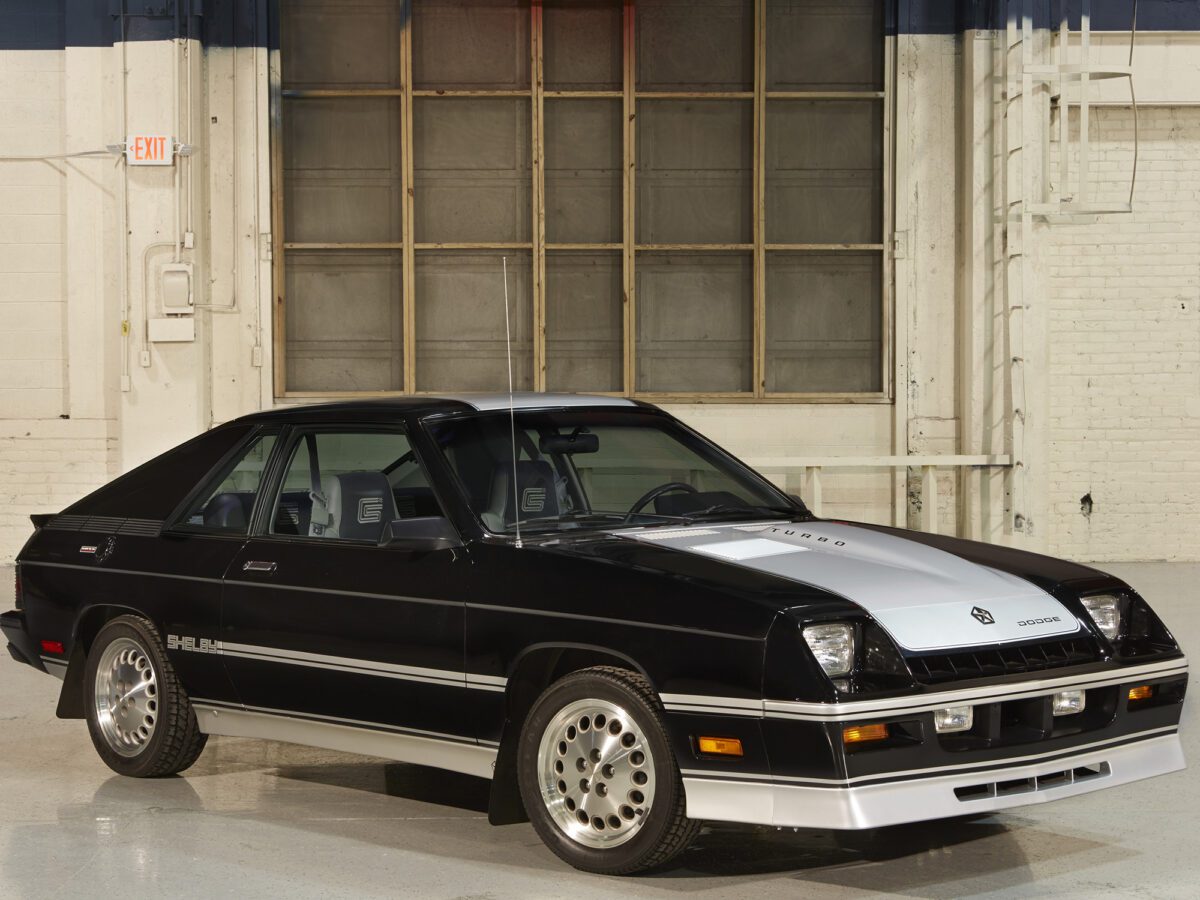1966 Charger
When Dodge unleashed the Charger for 1966 filling the gap between the popular pony car and the personal luxury coupe, it was unexpectedly fresh and yet entirely en vogue. The wide, full-width grille with hidden headlights was mimicked out back with full-width taillights. The sloping fastback-style roofline featured a huge, flat rear window with unique uptick bends at the side edges. The stylish interior featured four bucket seats, a spectacular instrument cluster display, and unique surface materials and designs. It could be optioned anyway the customer wanted; it seemed the sky was the limit. The Charger was one of those youthful cars that blended sophistication with a rebellious flair, a rare line to walk. With a bevy of drivetrain choices from the entry-level and efficient 318 CI V-8 with a 3-speed manual transmission all the way up to the NASCAR’esque 426 CI Hemi V-8 with a 361 and 383 wedged between, there was a powerband for everyone. Buyers could choose between an optional 4-speed manual or 3-speed automatic transmission too.
1967 Charger
Roughly the same car, little would change between the 1966 and 1967 Chargers. Under the hood though, the 440 CI V-8 would finally become available, filling a kind of power gap between the 383 and the 426. Minor trim pieces would evolve too, but overall, it would be very similar.
Did the early Dodge Charger ever catch on?
In short, no. The early Chargers were a hard sell, thanks to multiple items all working against it, namely the fact that it was simply misunderstood by the market. It was largely perceived as a Dodge Coronet with a sportier body and interior, a GT car based on a proper sedan chassis. The media of the day wasn’t kind to it, but they weren’t mean to it either – just lukewarm. This played against the Charger too, as the public read between the lines that it’s not a sportscar, it’s not a muscle car, it’s not a family car, but it’s sporty, muscular – okay, it’s not a family car, but it does seat four. Nearly 16,000 were sold for 1967, a far cry from the 96,100 Chargers sold in 1968. This statistic is interesting, considering that this was the year the Charger began looking a lot like the Coronet.
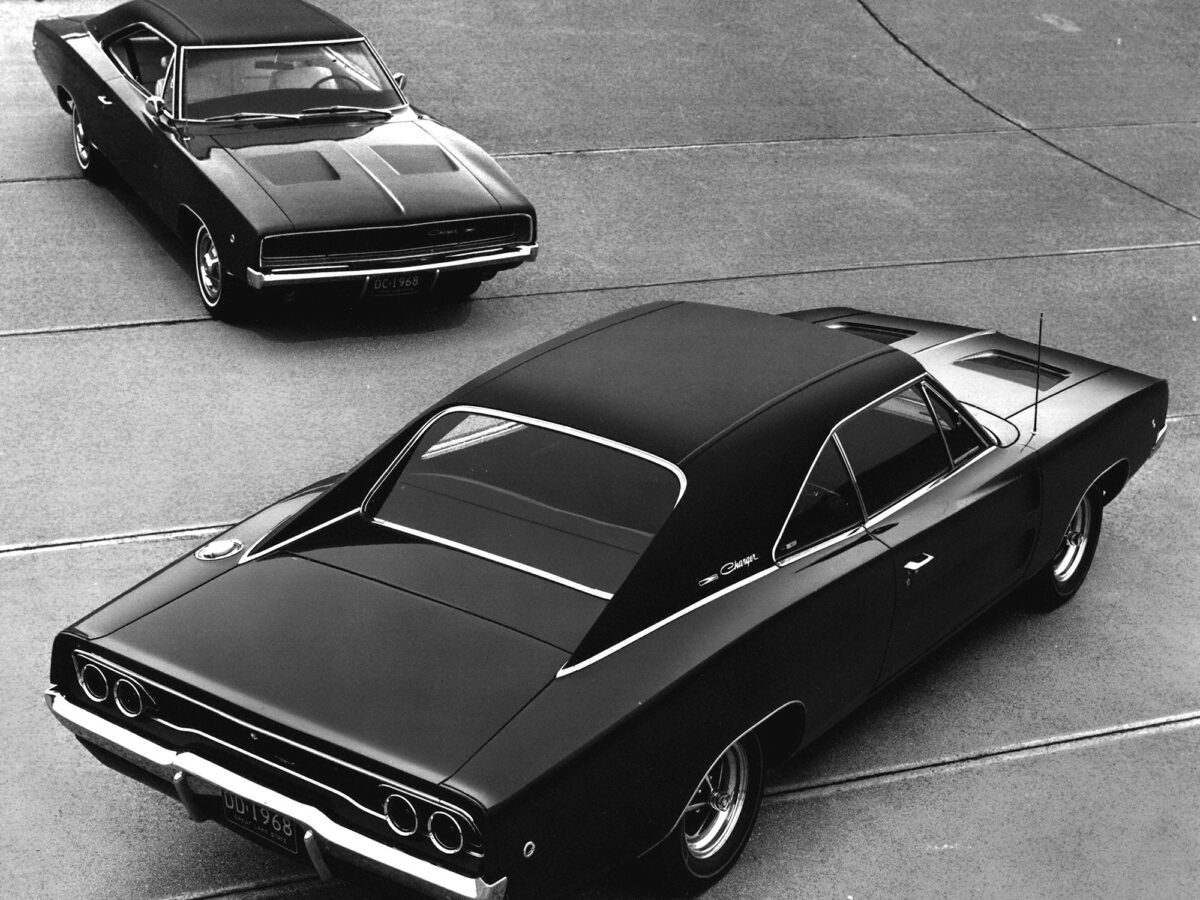
We think it’s a shame so many people avoided the early Charger, as it was truly a unique idea that blended the personal luxury coupe concept with the idea of a sporting car, a pony car, and a muscle car. It offered exceptional performance, particularly with the 383, 440, or 426, but there was nothing wrong, per se, with the 318 – it had plenty of pep and was terrific on fuel. It also had a comfortable and attractive interior, and a unique outward style. Even when ordered with the mighty 426, the Charger maintained a restrained outward appearance – no scoops and flairs and stripes celebrating that it’s a racecar for the street. But, all is not lost, the public’s perception then and now leaves more for the rest of us.
Is the early Charger right for me?
If you’re looking to stand out at a cars and coffee event, or car show, or anywhere else, then likely yes, the 1966 and 1967 Charger is right for you. You’ve got to be interested in having something few understand and some don’t even know exist. Be prepared to talk about it – or be snubbed for fans of later Chargers. These early cars, as mentioned above, offer a great balance of style, performance, and a unique interior. They’re solidly built and they do move very well – Car and Driver magazine tested an early 1966 example with a 383/3-speed automatic and found 0-60 in just over 7-seconds, which was nice for the day. They also remarked that it braked well and cornered flatly with predictable handling overall. But they couldn’t stop discussing the Coronet upon which it was based, and still today, some people are romanced by the Dukes of Hazzard, Dirty Mary, Crazy Larry, and, of course, Bullitt.
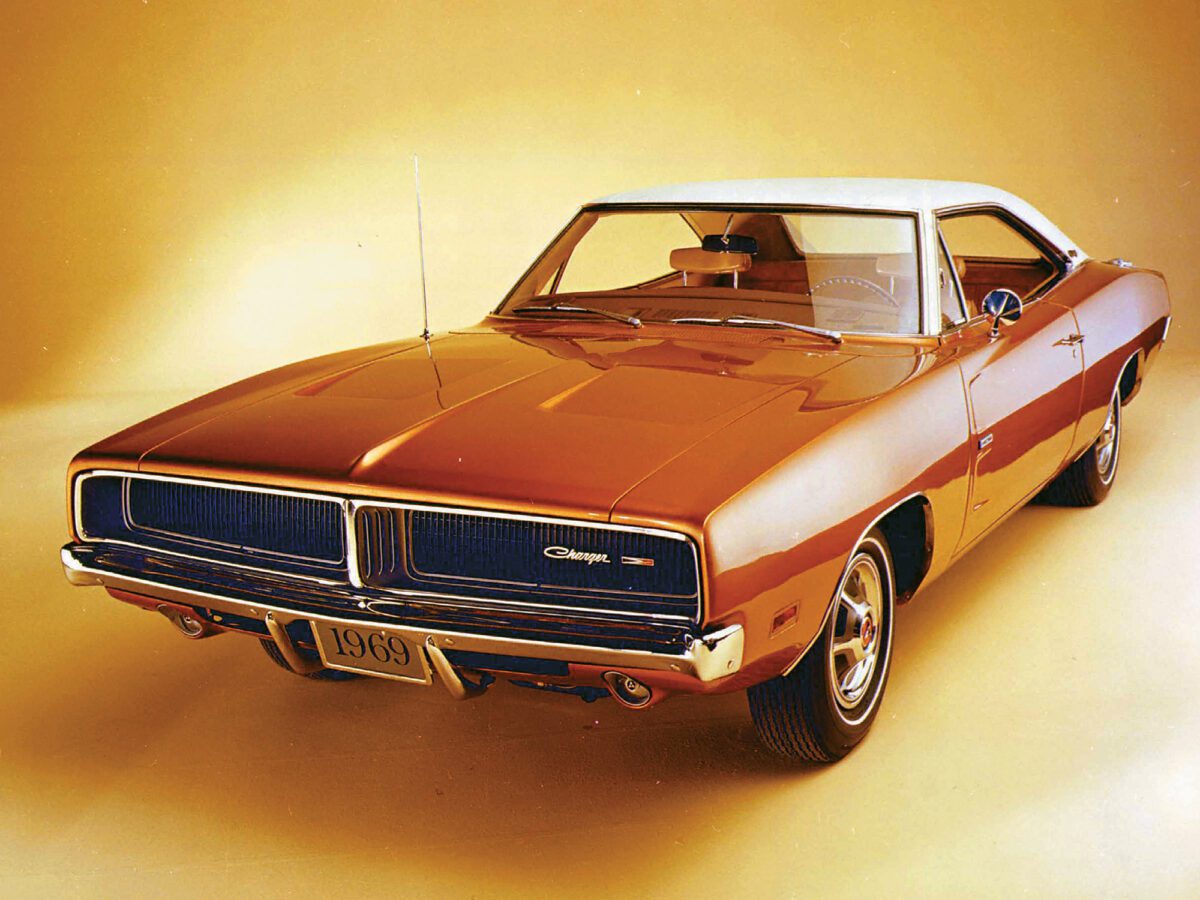
1968 – 1970 Charger
Thanks to a ton of starring roles in movies and television shows, this generation of Charger is largely the most popular of the family. The 1968 movie Bullitt arguably put the Charger on the map. The Bullitt Charger absolutely personified the ultimate henchman car. Where so many Hollywood bad guys use Lincoln, Mercedes-Benz, Cadillac, and Imperial, the Charger made them all look amateur. It was big and brawny, but its black finish and black vinyl roof with moments of brightwork lent it the image of a brute in a suit. It rode on triple white stripe tires and employed hubcaps rather than blingy Magnum 500s, adding to the conservative overall image. Driver Bill Hickman was genius at making the car look literally like a living thing observing the happenings of various scenes, easing it into parking spots in virtual silence, as if watching and thinking. In fact, the Charger was relatively quiet the entire time, until it had to bolt from the Highland Green Mustang fastback stalking it. And then there was Dirty Mary, Crazy Larry; and The Dukes of Hazzard; Cannonball (not Cannonball Run); Blade; The Fast and the Furious, and a host of others that used the second-generation Charger for various roles, all fueling the public’s imagination.
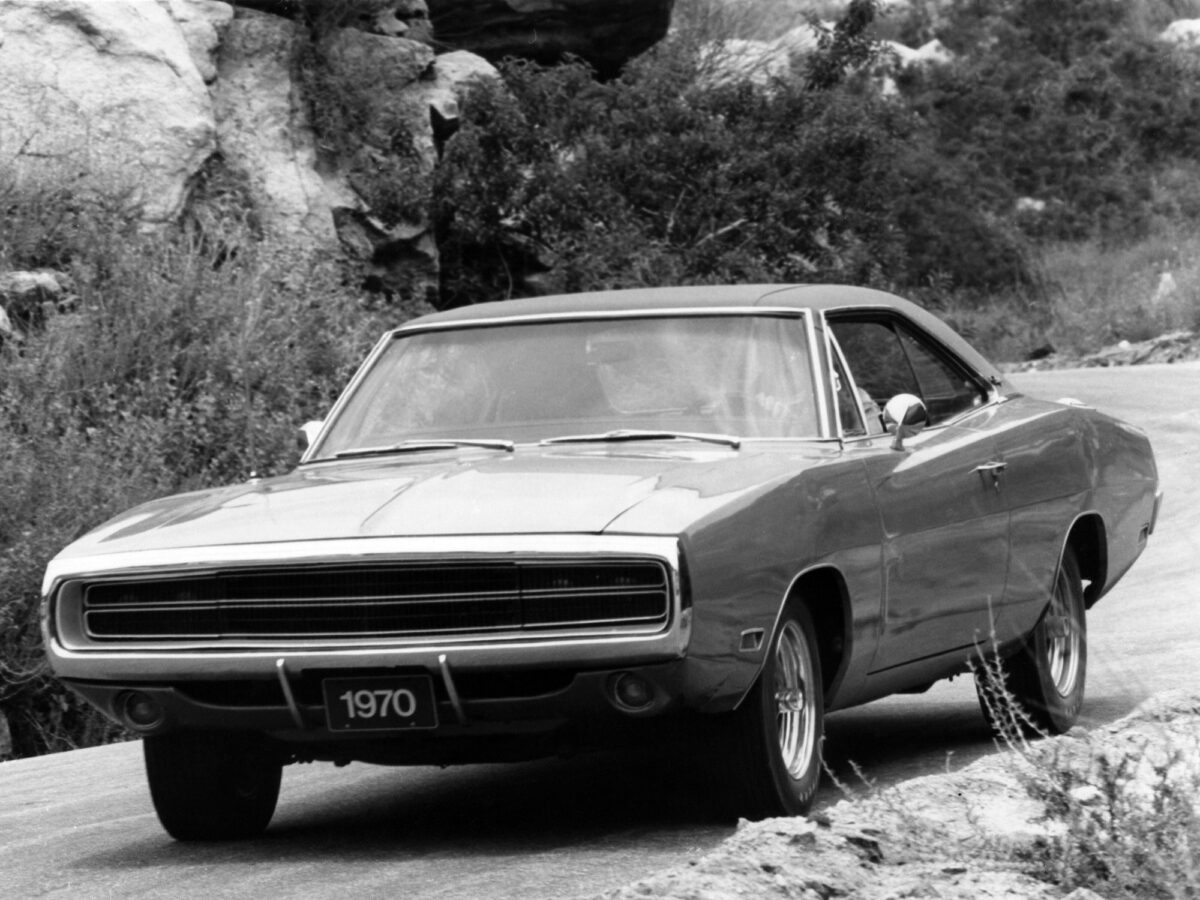
1968 Charger
Dodge planned about 35,000 sales for the newly designed and engineered 1968 Charger and ended up selling just over 96,000. Needless to say, the company hit the nail on the head this time. Entirely restyled, the Charger more closely resembled the Coronet upon which it was based, the body adopting a fuselage look which all models in the ChryCo lineup would largely share by 1971. The interiors were simplified with a bench rear seat and simpler dashboards. The front end retained the hidden headlight treatment, but this time the grille work was recessed from the edge of the hood and bumper. The taillight panel featured four round pods for brake and taillights, two pods at each end of a lengthy strip of camera case material. The roofline tapered at the rear similarly to the original Charger design, but instead of a lengthy fastback, the rear window was nestled between the B-pillars creating a kind of buttress style.
An ocean of engine choices was available, ranging from an inline 6-cylinder to an array of V-8s such as the 318, 383, 426, and 440. Likewise, customers could choose a variety of options such as power steering, power brakes, air conditioning, power windows, an AM/FM stereo, a center console, and much more. Like the first-generation Charger, the second gen was proving to be a car that could be custom tailored.
For 1969 and 1970, much would remain the same with minor styling changes inside and out dictating the differences. Under the hood and to the chassis, things would remain as they were in 1968.
Is the second-generation Charger right for you?
For now, and in the foreseeable future, the second-generation Charger is the most popular of the family. It starred in a number of television shows and movies, it was vastly more popular than the original just in sales alone, it struck a chord with the public which largely resonates today. Likewise, it remains the most valuable of the Chargers, auction prices showing in the triple digits on many occasions, especially examples in exceptional condition, or those with a big block, so expect to pay accordingly. Beset with a kind of Jekyll and Hyde personality, they were relaxed cruisers, when the drivers allowed them to be, and comfortable over long hauls; but they could turn into absolutely ferocious ground pounders on a moment’s notice. Refer back to the black Charger in Bullitt. Subtle and sedate one minute, the next it’s terrifying San Francisco. Unlike the first-generation Chargers though, expect conversations with people who bring up all the movies and shows these cars were used in – people are familiar with these cars, and that kind of interaction can be fun.
Later Chargers
We hate to lump them all together, but the 1971-1974 Chargers were largely victims of the insurance crackdown on safety and the days of the oil embargo. They became bigger and more luxurious, slowly leaving their performance origins for the annals of history. But – they did move okay and they drove beautifully, with a smooth ride and balanced handling.
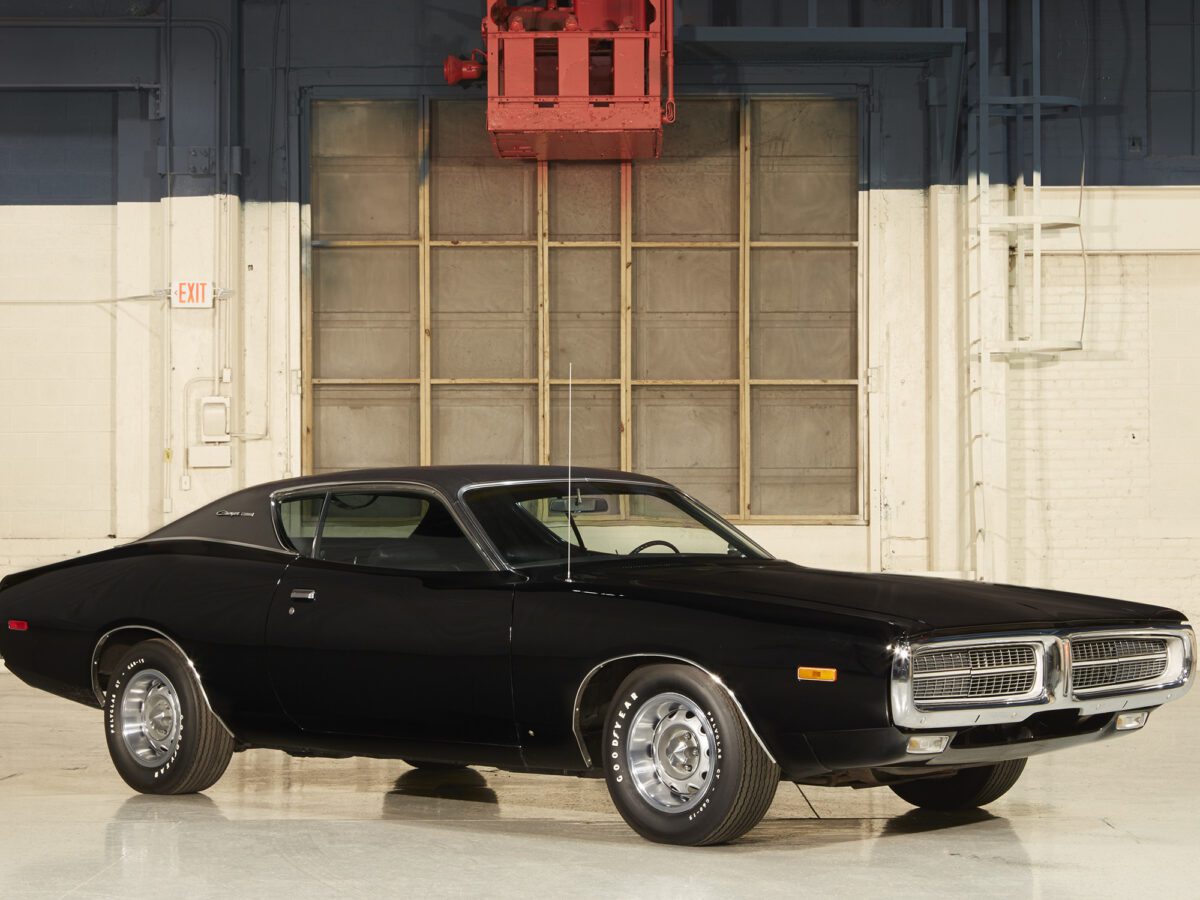
The 1975 Charger would largely take on a kind of Chrysler Cordoba motif evolving more into the personal luxury coupe segment, again, relegating most of its performance abilities to the stripe kit. The Charger name would cease production by the end of 1978. Was it a bad era? Not entirely, but many haters absolutely trash talk them – so if that bugs you, avoid them. However, this overlooked era of Charger is often known as being very rewarding, if you appreciate a comfortable drive with a sporty undertone. It was as if the Charger grew up. And keep in mind too, it’s more than likely that it will be the only one at any event.
For 1982, the Charger would return and have a run through 1987. Packing a 2.2L inline 4-cylinder with an optional turbo, these could be seriously fun cars. They were exceedingly lightweight and never underestimate the four banger – just relearn how to use an engine. But be careful – many people like to overrev them and that can be fatal. But overall, the 2.2L was a fairly robust plant. Shelby began modifying them in 1983, and Shelby Chargers are arguably the ones to look for. Shelby worked some image magic over the car, giving them a racier look, and for 1985, the four-pot was putting out 146 HP. By far, the one to seek out is the 1987 GLHS. Just 1,000 were made and they were fitted with the new 2.2L Turbo II inline 4-cylinder with a Garrett turbo, an intercooler, a two-piece intake manifold with larger fuel injectors, improved throttle body, and a Shelby-tuned ECM. The whole enchilada provided 175 HP and 175 lb-ft. of torque, making it a stunning performer for the day. To compare, the 1987 Ford Mustang GT and Chevrolet Camaro IROC-Z both delivered 225 HP, the Mustang using a 5.0L V-8 the Camaro employing a 5.7L V-8 – just 50 extra horsepower from an additional 2.8L and 3.5L of engine displacement. Needless to say, the Charger, especially in Shelby tune, delivered tremendous performance.
By Chris Ochs
